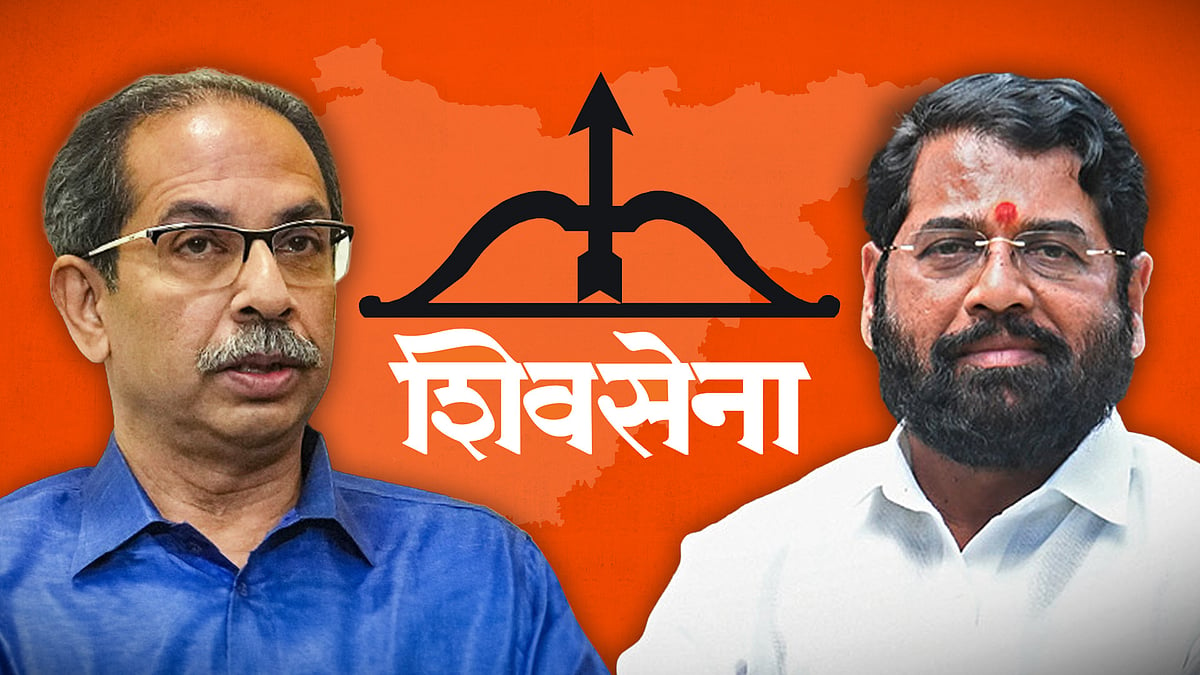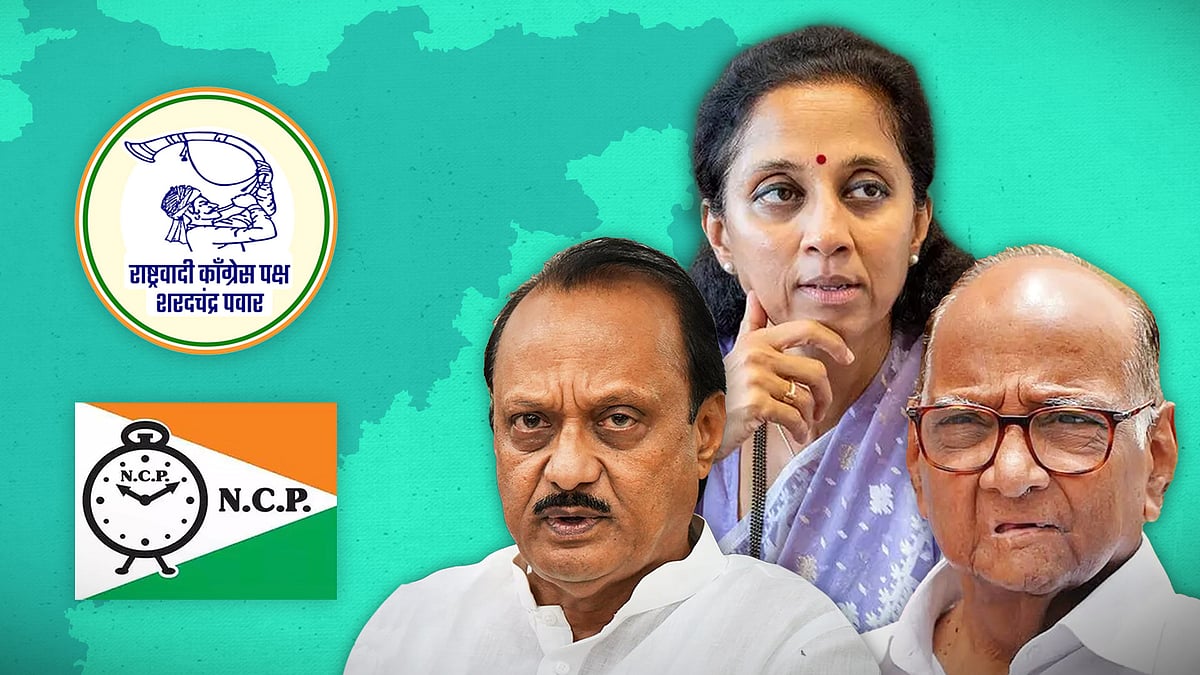Alliance troubles, Maratha factor: What made Maharashtra the BJP’s Achilles heel
The BJP-led Mahayuti alliance had aimed to secure 45 out of 48 seats in the state.
Prime Minister Narendra Modi visited Maharashtra 18 times over the past two months to campaign for the BJP-led Mahayuti alliance, but the state turned out to be the Achilles' heel for his own party.
The afternoon of the results, party workers sat next to now-obsolete posters of “Ab ki baar 400 paar (beyond the 400-mark this time) at the BJP’s Maharashtra office, discussing the mandate. Far from the Mahayuti’s aim to secure 45 out of the state’s 48 seats, the alliance of BJP, Eknath Shinde’s Shiv Sena and Ajit Pawar’s NCP could get only 17 seats – less than even the BJP’s solo tally of 23 seats in 2019.
The BJP’s performance individually too cost the Mahayuti. It did not even manage a double digit this time – winning only nine seats, with a strike rate of 32.15 percent.
In fact, while the BJP managed to increase its vote share in some states where it lost seats, its vote share in Maharashtra dipped by one percent – from 27.84 percent in 2019 to 26.45 percent in 2024.
The loss is significant not only because a repeat of the 2019 performance could have rallied the party closer to the majority mark of 272 than its current 240, it could have also cemented its position for the Maharashtra assembly elections, which are merely six months away.
Now, in the wake of the results, Maharashtra Deputy Chief Minister Devendra Fadnavis has offered to resign. But what led to the saffron party’s decline in the battleground state?
Newslaundry spoke to party workers, leaders, and voters to decode the BJP’s losses in the state.
Alliance troubles, anti-sympathy wave
The Lok Sabha poll was the first election after the two big splits in the state – the Shiv Sena’s in 2022 and the NCP’s last year.
While senior BJP leaders denied having any hand in engineering the factions, the rebel leaders of both the camps – Eknath Shinde and Ajit Pawar – joined hands with the BJP soon after the split. In the Mahayuti coalition government, Shinde became the Chief Minister, while Pawar and BJP’s Fadnavis were made deputy CMs, triggering the term “operation lotus.”
Voters in Maharashtra expressed frustration over the splits. Given the BJP’s long history of alliances with the Shiv Sena, its coalition with the Shinde camp was not considered unnatural. But the party’s alliance with the NCP, given their distinct ideologies, purportedly did not sit well with the people.
“There were new alliances this time, new politicians, and maybe because of their decisions, our image got affected,” said Sanjay Kenekar, BJP state general secretary. “There were calculation errors. As a party, we could not outrightly decide which candidate they would put up from the seat allotted to them.”
Kenekar told Newslaundry that, in hindsight, the calculations made by the Mahayuti had faltered, and the BJP was feeling its heat.
“Our party workers did their all to reach voters, but in many seats, people wanted a lotus candidate,” he said. “The alliance is not a mistake, but perhaps decisions made by the other parties in the alliance have cost us as well,” he said.
Asked if this was the fallout of the perception that the BJP had played a role in the split, Kenekar brushed it off, saying, “They aren’t kids that we pulled them and got them to our alliance. And even if the party broke, it joined somewhere else after that.”
Another party worker said that several of their concerns and demands were sidelined to “accommodate new alliance partners”. The seat-sharing arrangements by the Mahayuti also led to a massive delay in the announcement of the candidates list, with some being nominated on the last day of April.
But there’s no denying the sympathy wave that was strong for Uddhav Thackeray and Sharad Pawar.
The Maratha agitation factor
After months of agitation by the Marathas, the Mahayuti government agreed to bring in a 10 percent quota for the community. But the promise is yet to be fulfilled.
As a result, the mandate in Marathwada was a steaming no for the BJP. The Mahayuti lost seven out of the eight seats in the region – Prabhani, Hingoli, Nanded, Osmanabad, Latur, Jalna, and Beed. However, the Shinde faction’s Sandipan Bhumare secured Aurangabad.
Four of these eight seats were contested by the BJP. One of the biggest defeats was in Jalna, where BJP’s Raosaheb Danve, who held the seat since 1999, lost by 1,09,958 votes to Congress’s Kalyan Vaijinathrao.
In Beed too, BJP’s Pankaja Munde lost her family bastion to Sharad Pawar faction’s Bajrang Sonawane, but the margin was thin of 5,686 votes. Both Jalna and Beed were the epicentre of the Maratha agitation led by activist Manoj Jarange.
Nanded was another shock for the BJP. Even though former Congress heavyweight Ashok Chavan’s entry into the BJP last year had left little hope among the Maha Vikas Aghadi leaders, Chavan lost. Congress’s Chavan Vasantarao Balwantrao emerged victorious with 59,442 votes.
The central government’s decision to ban exports of onion and further extend it also hurt the BJP. The NDA lost in 12 out of the 13 constituencies which record major onion trade.
Dalits, Muslims, and the constitution
The fear among people that a big mandate for Modi could mean changes in the constitution also cost the party heavily even as the Prime Minister denied it in his speeches.
Meanwhile, the opposition attacked the saffron party, claiming that the BJP’s third term would pose a risk to reservations and even the constitution.
Maharashtra has 10 percent Dalit population. Besides the Dalits, the MVA also received the support of Muslims, who comprise 11 percent population in the state. Muslim voters who spoke to Newslaundry said that they voted for Shiv Sena Uddhav Thackeray despite being apprehensive about the party’s Hindutva stance.
‘Overconfidence’
In Mumbai North East, Shiv Sena UBT’s Sanjay Patil defeated BJP’s Mihir Kotecha by 29,861 votes. The constituency was the only one in Mumbai where Modi held a roadshow.
The roadshow took place in Ghatkopar days after a billboard collapsed in the area, killing at least 14 people. Modi was criticised at the time for not meeting the victims of the tragedy.
Despite the roadshow – or maybe because of it – Kotecha’s vote share especially dipped in the Ghatkopar assembly areas.
Several BJP workers told Newslaundry that the party’s overconfidence had led to its losses.
The party had announced “Mission 45”, its goal to win 45 seats in Maharashtra, in 2019 itself. But the result was far from it.
“It’s time to introspect if we worked for it or got overconfident,” said a party worker, who also blamed the losses on BJP president JP Nadda's statement about the RSS. Last month, Nadda said, “In the beginning, we would have been less capable, smaller and needed the RSS. Today, we have grown and we are capable. The BJP runs itself.”
“All of us party workers have our origins in the RSS’s shakha. The statement backfired, but what hurts is that none of the top brass even opposed it,” claimed the party worker.
Small teams can do great things. All it takes is a subscription. Subscribe now and power Newslaundry’s work.
 No clear winner in Sena vs Sena battle. Over to assembly polls now
No clear winner in Sena vs Sena battle. Over to assembly polls now Sharad Pawar’s 80% strike rate vs Ajit’s 25%: It’s clear who carries the NCP legacy
Sharad Pawar’s 80% strike rate vs Ajit’s 25%: It’s clear who carries the NCP legacy Sena vs Sena: Which is the ‘real’ Shiv Sena in Mumbai and Thane?
Sena vs Sena: Which is the ‘real’ Shiv Sena in Mumbai and Thane?